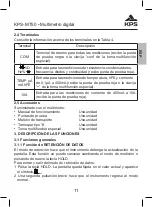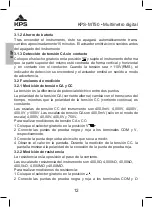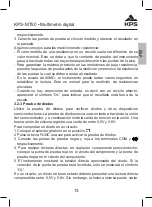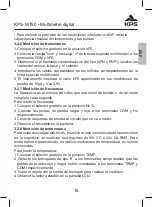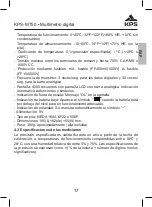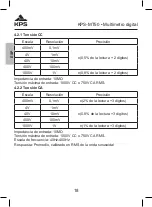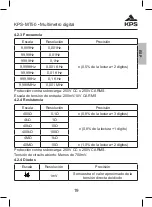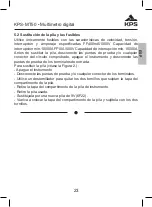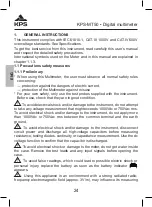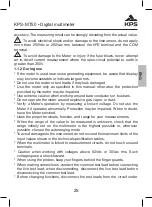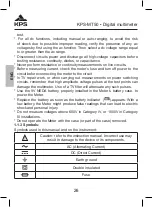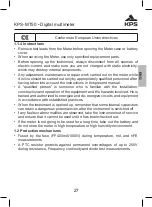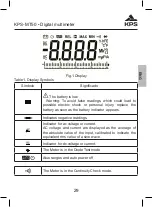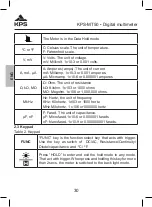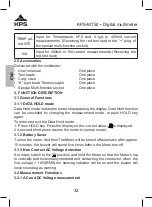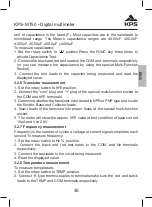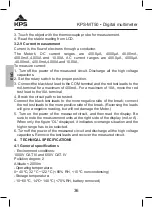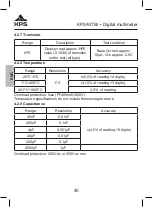
25
KPS-MT50 • Digital multimeter
ENG
accuracy. The measuring result can be strongly deviating from the actual value.
To avoid electrical shock and/or damage to the instrument, do not apply
more than 250Vdc or 250Vac rms between the hFE terminal and the COM
terminal.
To avoid damage to the Meter or injury if the fuse blows, never attempt
an in-circuit current measurement where the open-circuit potential to earth is
greater than 250V.
1.1.2 During use
* If the meter is used near noise generating equipment, be aware that display
may become unstable or indicate large errors.
* Do not use the meter or test leads if they look damaged.
* Use the meter only as specified in this manual; otherwise, the protection
provided by the meter may be impaired.
* Use extreme caution when working around bare conductors or bus bars.
* Do not operate the meter around explosive gas, vapor, or dust.
* Verify a Meter’s operation by measuring a known voltage. Do not use the
Meter if it operates abnormally. Protection may be impaired. When in doubt,
have the Meter serviced.
* Uses the proper terminals, function, and range for your measurements.
* When the range of the value to be measured is unknown, check that the
range initially set on the multimeter is the highest possible or, wherever
possible, choose the autoranging mode.
* To avoid damages to the instrument, do not exceed the maximum limits of the
input values shown in the technical specification tables.
* When the multimeter is linked to measurement circuits, do not touch unused
terminals.
* Caution when working with voltages above 60Vdc or 30Vac rms. Such
voltages pose a shock hazard.
* When using the probes, keep your fingers behind the finger guards.
* When making connections, connect the common test lead before connecting
the live test lead; when disconnecting, disconnect the live test lead before
disconnecting the common test lead.
* Before changing functions, disconnect the test leads from the circuit under

